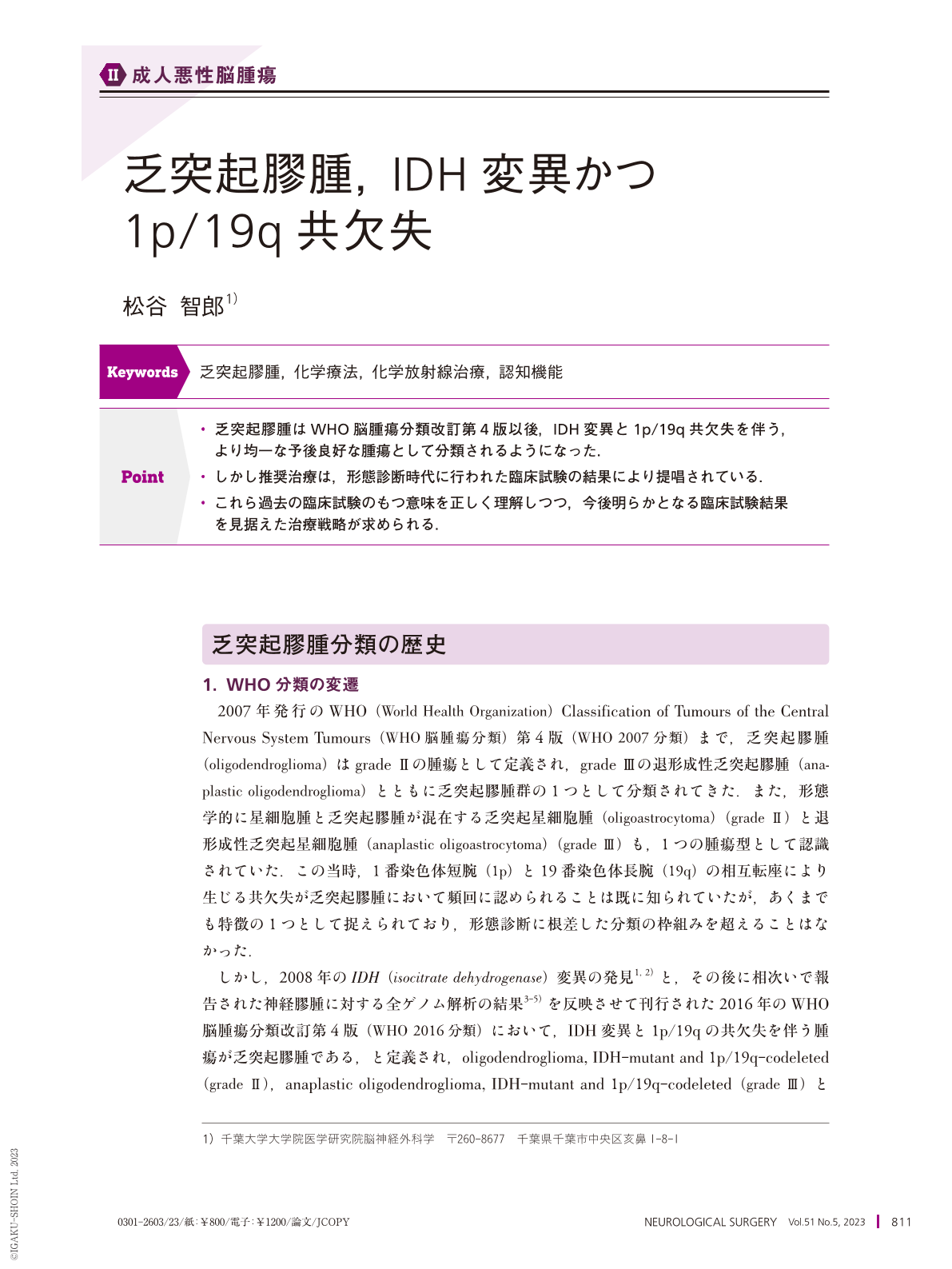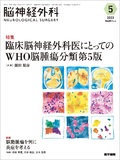Japanese
English
- 有料閲覧
- Abstract 文献概要
- 1ページ目 Look Inside
- 参考文献 Reference
Point
・乏突起膠腫はWHO脳腫瘍分類改訂第4版以後,IDH変異と1p/19q共欠失を伴う,より均一な予後良好な腫瘍として分類されるようになった.
・しかし推奨治療は,形態診断時代に行われた臨床試験の結果により提唱されている.
・これら過去の臨床試験のもつ意味を正しく理解しつつ,今後明らかとなる臨床試験結果を見据えた治療戦略が求められる.
Oligodendrogliomas were clearly defined as tumors with IDH mutations and 1p/19q codeletion by the World Health Organization(WHO)in 2016. Their prognosis is better than that of morphologic oligodendrogliomas, which might include some other gliomas according to WHO in 2016 and 2021.
The term“low-grade gliomas”does not exist in the WHO classification and has changed in meaning over time; prior to WHO 2016, it meant grade Ⅰ and Ⅱ gliomas; subsequently, it changed to“lower-grade gliomas,”including grade Ⅱ and Ⅲ gliomas, with the same molecular features. In the current classification, IDH wild-type grade Ⅱ and Ⅲ gliomas have been eliminated, and“lower-grade gliomas” now only include gliomas with IDH mutations.
Maximal safe resection is necessary for a proper molecular diagnosis and survival, and awake craniotomy should be aggressively considered to prevent permanent postoperative neurologic deficits for tumors in the eloquent region. Supramarginal resection is an attractive approach for neurosurgeons to improve survival outcomes, but the evidence is still lacking.
Chemoradiotherapy with procarbazine, CCNU, and vincristine is recommended for both grade 2 and 3 oligodendrogliomas. However, the risk of radiation-induced neurotoxicity is a concern in long-term survivors, and several clinical trials have tested the efficacy of chemotherapy alone in terms of cognitive function. Since CCNU is not approved in Japan, ACNU-containing regimen as PAV, or temozolomide are commonly used for the tumor.

Copyright © 2023, Igaku-Shoin Ltd. All rights reserved.


